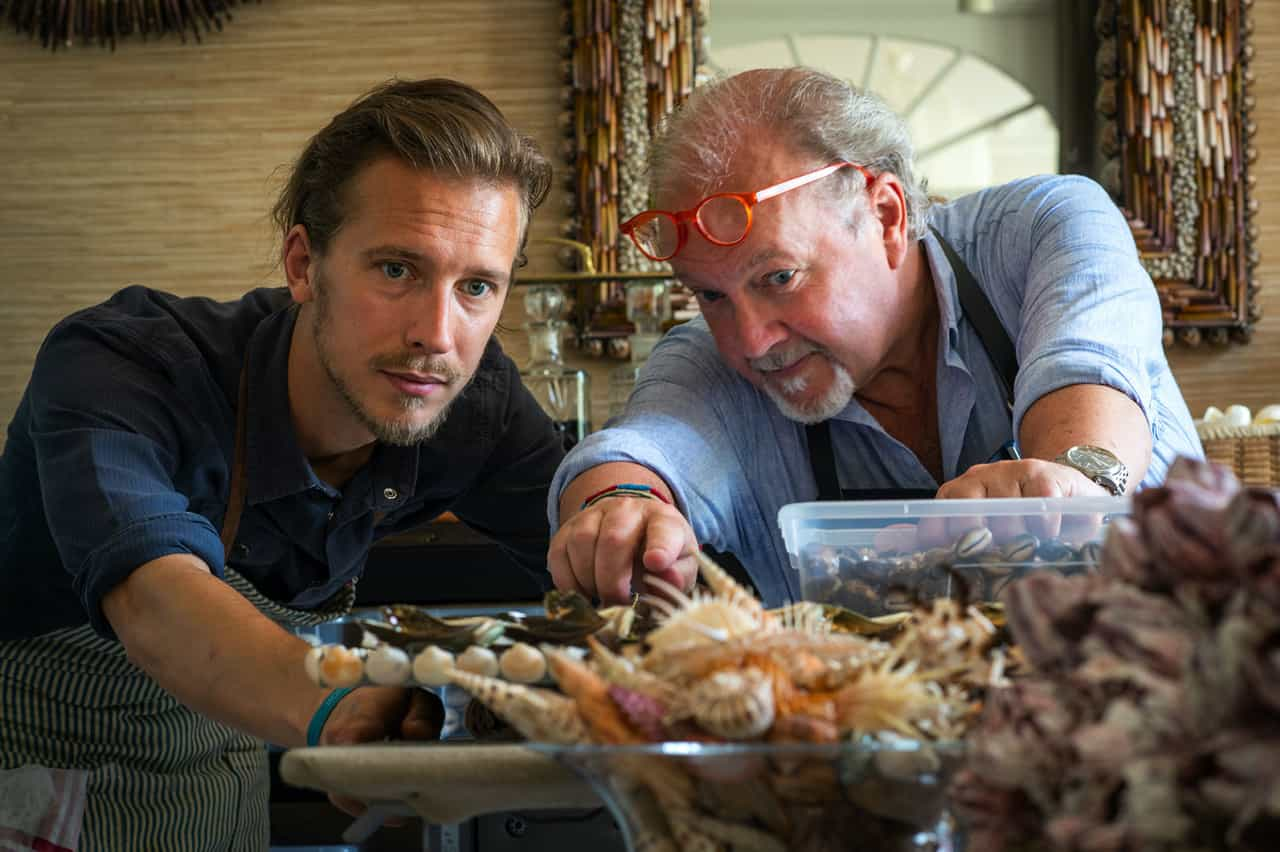Shellman
Biography

“Every Shellman piece is unique – no two are alike.
The mood of the day and inspiration from nature, science, music, pop culture or world events can set us off in any direction.
It’s often reflected in our naming of a finished piece. Anything and everything is possible.
We strongly believe in an open mind – immediate dismissal of stupid ideas is a no-no.”
Mikael Hjärtsjö and Buster Eriksson work with variable expressions within shell art and present a Scandinavian take on a concept which, even though almost unique in Sweden, is more widespread in for example the UK, France, the Netherlands and Florida, US.
Shellman work in the space where art and crafts meet. The seashells make the paint Mikael and Buster ‘paints’ with and the appearances varies greatly;
“Often hundreds of different seashells end up in an organic and seemingly random fashion, as if we encountered them on the ocean floor. However, it is the frame around the mirror which we contemplate; the eye is drawn from our reflection towards the periphery. Other designs are strictly patterned, sea urchins become stars and galaxies, flowing mussels are accompanied by shimmering seashells, and large barnacles are pieced together into intensely pink sculptures – free-standing or wall-mounted. Each expression demands its own unique creative work process.”
Mikael and Buster’s organic pieces and flowing mussels develop progressively without sketches, possibly with an idea of where on the light-dark scale the finished artwork should be. “We do not sketch, we just do.” Ideas are allowed to wander directly from the mind to the studio table, resulting in imaginative and eclectic works of art. “Every single shell attached is a decision in itself.”
The strictly patterned pieces have a different creative work process. Before the first seashell is placed certain preparations are required. With an overall idea of how the finished artwork should look several different types of seashells are sorted according to colour, form and size. Subsequently, the crafting part mostly consists of repetitive craftsmanship to create a finished pattern.
Regardless of expression or design, all Shellman’s artwork holds the highest quality of craftsmanship. The pieces display an incredible complexity and depth in what Mikael and Buster calls “shell topography”. The tools for their precision work are mostly the thumb and index finger. Sometimes however, tweezers or dental appliances are needed to align a seashell into an inaccessible nook.
In the organic pieces the landscape shifts and the eye is led from one place to another through the placement and direction of the seashells, or is instinctively drawn to clusters of shells in vibrant colours and amazing shapes.
The patterned artworks display elegant, geometrically structured patterns with remarkable repetitive precision.
In Mikael’s and Buster’s own words:
”Whether we create free-form or strictly patterned pieces, high ambitions always guide our craftsmanship: good enough is not good enough.
Final finish is everything – all or nothing at all.”
Shellman is actually two ‘shell men’: stepdad Mikael Hjärtsjö and bonus son Buster Eriksson.
Their fingers had over the years become increasingly itchy and they were both looking for a tactile way to express their creativity. They decided to leave their creative careers within the advertisement and IT industry respectively and in October 2018 the Shellman studio was ready.
Ten years previous Mikael had, by coincidence, met shell artist Niels von Alphen during a weekend in Amsterdam. He fell wholeheartedly for Niels’ shell art and bought three pieces on the spot.
Several years later Niels decided to move on with other projects in life. He contacted Mikael to hear if Mikael’s enthusiasm and interest for shell art was still as strong as it once had been, in which case he was willing to pass on the shell craftsmanship. And why not to Scandinavia and Mikael.
Mikael made an epic turnaround and left his advertising agency for an intensive apprenticeship in Niels’ studio in Amsterdam. Already during the second week of the training Mikael and Niels had a visit from Buster, on his way on a hitchhiking trip from Marrakesh to India. The encounter with Niels’ studio and the work which Mikael had commenced made Buster rethink his journey and declared that “India will still be there and can wait for me. The seashells and Shellman can be a journey too.”
So now, two generations shell artists work, side by side, for hours and days, months and now years, both in the studio in Helsingborg and along the windswept Scanian beaches.
Some notes on the seashells
Empty blue mussels, razor shells, cockles, and other seashells that Mikael and Buster use for their artworks they collect themselves during treks along Scanian beaches. Even oyster shells make for a usable work material and are ‘harvested’ each week from local restaurant kitchens.
After these local beach and restaurant reaps an extensive cleaning and sorting process awaits.
The remaining seashells are selected and reliable sources in Europe, all with necessary permit papers in order.
All seashells used is according to shell literature in abundance and are common, which is an important aspect to the two shell artists.

